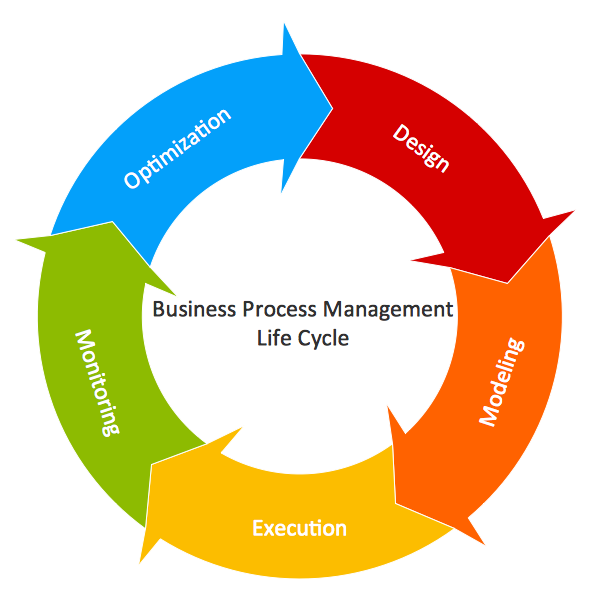Business Process Management: Detail Guide
BPM is widely accepted as an effective strategy implemented for process optimization and overall business operation improvement in an organization. BPM is a popular practice among businesses in diverse industries. Top BPM solutions providers are engaged in enhancing business processes to achieve efficient customer experience management with their services for customer-focused companies. However, there are different types of BPM and different degrees of concern involved in it. Moreover, other technologies are used in BPM operations. Also, examples of successful use cases of BPM can help organizations implement it effectively. This blog helps these businesses understand BPM in more detail so they can utilize it to optimize their operations and productivity.
Various Types of Business Process Management

Because BPM is so wide and often requires the usage of several technologies, some BPM professionals categorize the discipline as follows:
System-centric
This form of BPM focuses on workflow processes in business systems that function with little to no human interaction and are incorporated into business applications. Customer relationship management and enterprise resource planning systems are two instances of automated business processes.
Human-centric
BPM may also be used to focus on processes that humans manage. These processes or operations include those in business applications with human-interaction characteristics like a well-designed user interface, alerts, and notifications, along with a strategic approach in the workforce or human resource management.
Document-centric
This strategy focuses on paperwork, including contract layout, signing, and verification. Business process management software frequently specializes in document-centric jobs, such as document signing or others.
Top BPM solutions providers possess the capabilities to implement various types of BPM operations for different businesses and industries. Also, keep in mind the concern levels in BPM.
The Importance of Concern Level in BPM

Business process management software frequently specializes in document-centric jobs, such as document signing or others.
‘Concern levels’ in BPM
Harmon suggested in Business Process Change that it’s important to differentiate between the various “levels of concern” in BPM efforts. He described it as the enterprise, business process, and implementation or resource levels while deploying BPM. He also emphasized that projects or activities at different levels need different participants, methodologies, and support types to succeed.
According to him, a Business Process Management (BPM) project centred on a company’s supply chain management process determines the company’s supply chain is inefficient. So, that enterprise-level BPM team initiates a process redesign. The redesign team conducts research and makes recommendations for improvements that must be authorized by top management. In this case, the redesign entails purchasing a new ERP system involving the IT department. It also produces new employment responsibilities that necessitate training courses, necessitating the involvement of human resources. Top BPM solutions providers that intend to implement BPM successfully must understand and apply the three degrees of concern in BPM.
The three degrees of concern in BPM
Enterprise Level: This level concerns vision, goals, strategy, and business initiatives. Process architecture, process management, performance measurement, BPM governance priorities, and planning and overall alignment are handled at this level.
Business Process Level: Redesigning and enhancing the process, and the Six Sigma and Lean principles are applied at this level. Also, documenting projects is done at the business process level.
Implementation or Resource Level: This level clearly recognizes that carrying out projects needs investing in the right people and technologies. Implementing training programs, recruitment initiatives, and targeted IT development projects are included in this level. Projects undertaken to develop resources for new processes are the focus of the Implementation or Resource level.
Successful Examples and Use Cases of BPM

Many departments within a business employ BPM applications. Diverse industries and sectors can utilize BPM by using a top BPM solutions provider with industry experience. The following are some examples of how it is used to attain corporate goals:
Human Capital
BPM software may help HR departments become more productive by, for example, making timesheet reviews easier. Another HR area where BPM can enhance and speed up the numerous parts of the process is onboarding new personnel. When document-centric HR operations are automated, an organization’s use of paper forms is reduced.
Finance
Finance departments receive documentation from both system-centric and human-centric procedures. They are inundated with emails and paper paperwork pertaining to the company’s internal and external financial operations. A BPM platform, for example, enables finance departments to handle employee travel requests more quickly. It can also help to speed up the purchase process.
Sales
Sales teams must also cope with both human-centric and system-centric procedures. BPM technologies can help coordinate the exchange of sales quotations and invoicing, hence shortening the sales cycle activities.
Different Types of BPM Technology

Top BPM Solutions Providers must be adept with strategies for implementing BPM in industries and sectors and must possess adequate expertise in BPM technologies required in such projects. Here are an example of a few common BPM tools and technologies.
Business process management software (BPMS) is intended to automate business process improvement. BPMS, often known as BPM systems or suites, is a collection of many types of technologies that include the following:
Tools for discovering, representing, and analyzing the tasks that drive business operations are BPMN diagramming tools. Workflow engines automate the flow of activities or tasks that complete a business process and support workflow management; business rules engines (BREs) allow end users to modify business rules without having to approach a developer for assistance; and simulation and testing tools to observe how processes behave with no need to write code first.
Advantages of Business Process Management Implementation with a Top BPM Solutions Provider
The systematic approach to managing business processes used by BPM increases productivity, quality of work, and operational efficiency, the two main reasons companies adopt BPM. A well-executed BPM program may reduce waste, reduce mistakes, save time, enhance compliance, boost agility, promote digital transformation, and ultimately help consumers receive better goods and services.
BPM enables companies to simplify workflows by automating challenging and tedious operations such as data management, data flows, data entry and approval processes, and report generation.
The following factors can also make BPM a useful management tool:
- The emphasis on process standardization in BPM decreases the possibility of human mistakes.
- Embedded analytics provides managers with more visibility into process performance and aids in the identification of bottlenecks.
Automation technologies boost productivity and free up staff members to concentrate on activities that require reasoning, empathy, and involvement. Thanks to the factors mentioned above, employees will have more time to find more opportunities for process improvements and successful automation for ongoing business process improvement.
Conclusion
BPM is a vast and complex concept. It involves many aspects and is often unique to business organizations as their needs and characteristics often significantly differ. So, engaging a top BPM solutions provider is an excellent idea to manage these ever-evolving factors and successfully adopt business process management (BPM) in your organization to achieve better business outcomes and growth.

















